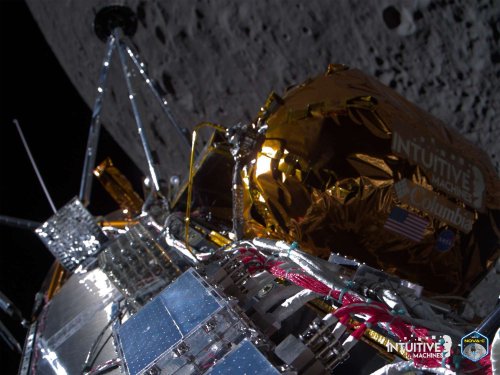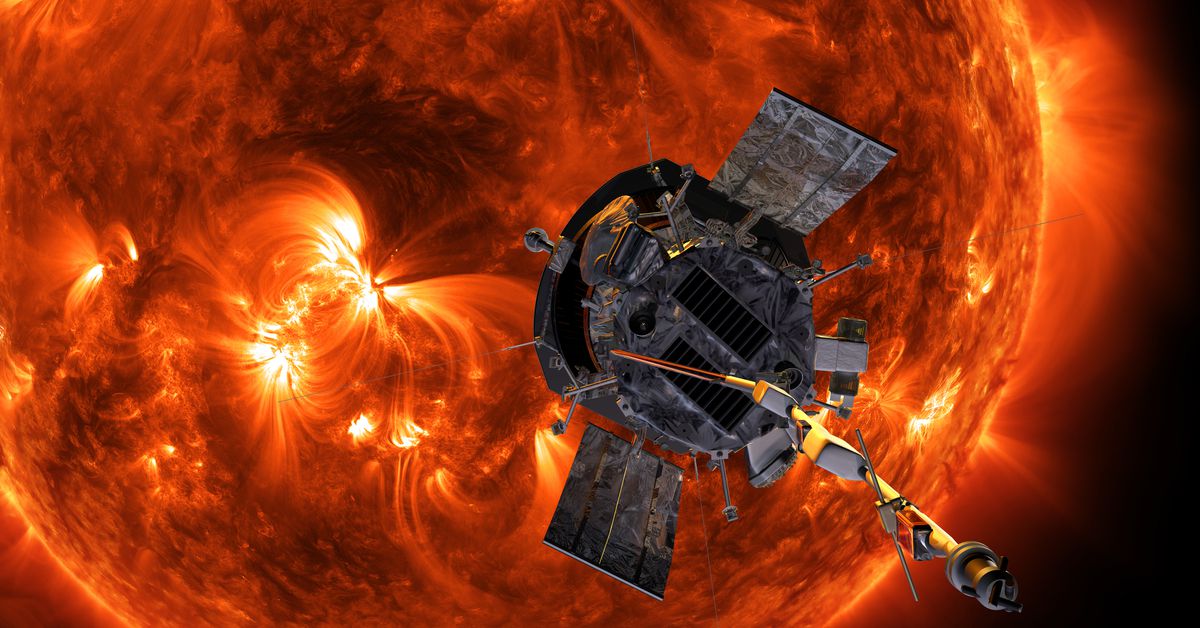Intuitive Machines Makes History with First Commercial Lunar Lander
Yesterday, the Intuitive Machines spacecraft, Odysseus, touched down on the lunar surface sideways. Despite the imperfect landing, CEO Steve Altemus confirmed during a press conference that it’s nothing short of a miracle the spacecraft landed intact at all.
The Miraculous Landing
Using a small model of the lander, Altemus demonstrated how engineers believe Odysseus made its descent given the most recent telemetry data. "The vehicle is stable near or at our intended landing site," Altemus said. "We’re downloading data from the buffers in the spacecraft and commanding the spacecraft."
The Intuitive Machines team confirmed yesterday that the lander touched down on the surface at 5:24 p.m. Central Time, making the company the first to put a privately built spacecraft on the moon. However, many details about the vehicle’s health were unknown due to the onboard camera, EagleCam, being powered down during landing.
Without images, engineers had to rely on other data to determine the lander’s orientation after it landed. Intuitive Machines is still continuing to reconstruct the series of events that led up to the historic landing.
The Original Assumption
Initially, the company thought Odysseus was actually upright upon landing, but Altemus stated that this was based on "stale" telemetry data. Currently available information indicates that the spacecraft was indeed vertical at touchdown but was also moving horizontally and a little too quickly.
This led to one of its legs catching on something or breaking, causing it to tilt over. Fortunately, most of the onboard payloads are not on the downward-facing panel, which does not need to operate on the lunar surface.
The Company’s Success
Much of the mission’s success came down to very quick thinking by Intuitive Machines’ mission controllers and just a stroke of good luck. The navigational issues started after Odysseus conducted a planned maneuver called lunar orbital insertion on Wednesday night, which put it in an elliptical orbit around the moon.
This turned out to be extremely "fortuitous," Altemus said, as it led mission controllers to try using a navigational subsystem called ‘laser rangefinders’ far earlier than planned (the lasers were going to be activated for the first time during the final descent phase).
The Laser Rangefinder Issue
After reviewing the data, the company realized the morning of landing that the lasers were not working because they did not turn off a physical safety switch on the component while it was still on the ground.
These lasers determine critical variables for landing, like altitude and horizontal velocity; with them non-functional, Odysseus could have succumbed to the harsh lunar environment. Fortunately, mission controllers adapted quickly and found alternative solutions.
The Alternative Solution
To navigate through the lunar terrain without laser rangefinders, the team employed a combination of GPS data, accelerometers, and gyroscopes. This approach allowed them to accurately calculate their position and velocity in real-time.
Nvidia’s AI Empire: A Look at its Top Startup Investments
Nvidia is a leading manufacturer of graphics processing units (GPUs) and high-performance computing hardware. Recently, the company has been expanding its presence in the field of artificial intelligence (AI). In this article, we’ll take a look at some of Nvidia’s top startup investments in AI.
The Rise of AI Startups
Artificial intelligence is revolutionizing industries across the globe. From self-driving cars to medical diagnosis, AI startups are pushing the boundaries of what’s possible with machine learning and deep learning algorithms.
Nvidia has been investing heavily in these startups, providing them with access to its cutting-edge GPU technology. This partnership enables AI startups to develop more efficient and effective solutions for their clients.
Top Nvidia Startup Investments
Here are some of the top startup investments made by Nvidia in recent years:
- DeepMind: A UK-based AI research lab acquired by Alphabet (Google’s parent company) in 2014, DeepMind specializes in developing general-purpose learning algorithms.
- GeForce Now: Nvidia’s cloud gaming platform enables gamers to access their games from anywhere, using any device with a web browser.
- NVIDIA DriveWorks: An open-source platform for automotive-grade AI development, NVIDIA DriveWorks provides tools and software libraries for the creation of autonomous vehicles.
- NVIDIA Clara: A suite of AI-powered healthcare solutions, NVIDIA Clara streamlines medical imaging analysis and improves patient outcomes.
Conclusion
Intuitive Machines has made history with its first commercial lunar lander, Odysseus. Despite a few setbacks during landing, the spacecraft successfully touched down on the moon’s surface. This achievement marks an important milestone in private space exploration and demonstrates the capabilities of Intuitive Machines’ technology.
The mission highlights the importance of adaptability and quick thinking in overcoming challenges in space exploration. As we continue to push the boundaries of what’s possible in space, companies like Intuitive Machines will play a crucial role in shaping our understanding of the universe.




